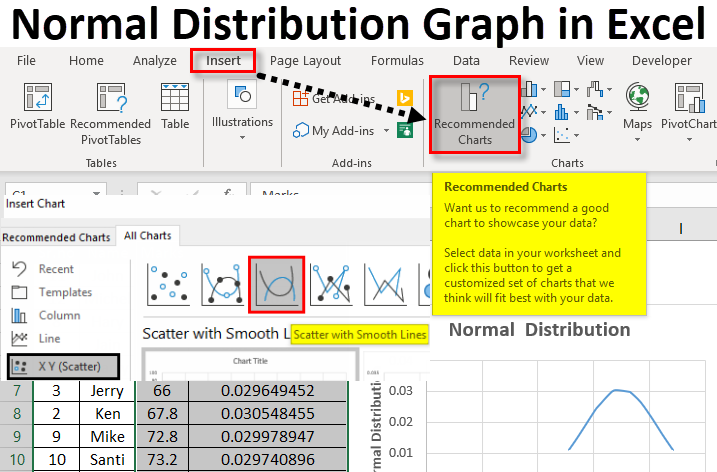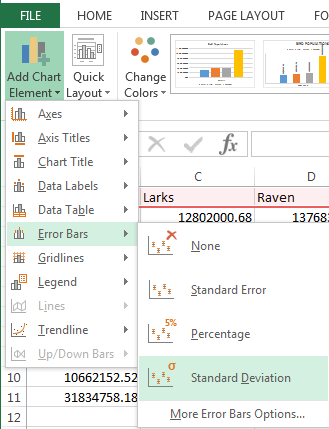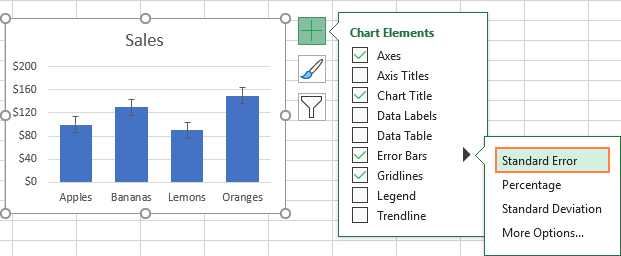

In the Number of Random Numbers box, type 2000. In the Analysis Tools box, click Random Number Generation, and then click OK. To generate the random data that will form the basis for the bell curve, follow these steps: Select Cell C3, grab the fill handle, and then fill the formula down from cell C3 to cell C8. This formula adds one standard deviation to the number calculated in the cell above. This number represents three standard deviations less than the average. This generates the lower limit of the bin range. These formulas will generate the average (mean) and standard deviation of the original data, respectively.Įnter the following formulas to generate the bin range for the histogram: To create a sample bell curve, follow these steps:Įnter the following column headings in a new worksheet:Ī1:Original B1:Average C1:Bin D1:Random E1:Histogram G1:HistogramĮnter the following data in the same worksheet:Įnter the following formulas in the same worksheet: From the histogram, you can create a chart to represent a bell curve.

After Microsoft Excel generates a set of random numbers, you can create a histogram using those random numbers and the Histogram tool from the Analysis ToolPak. N the following example you can create a bell curve of data generated by Excel using the Random Number Generation tool in the Analysis ToolPak. This article describes how you can create a chart of a bell curve in Microsoft Excel. Less SummaryĪ bell curve is a plot of normal distribution of a given data set. To verify this, all the numbers of the range arrange are placed in order and cell B1 has the 3 rd smallest value of the range which is 3.Excel 2021 Excel 2019 Excel 2016 Excel 2013 Excel 2010 Office for business More. In the example below, you will observe that the SMALL function is applied on range A1:O1 to determine the 3 rd smallest value in the given range and the resultant value 3 is shown in cell G4. However, the level of min value can be set in SMALL function. SMALL function is used to determine the minimum value in a given range. To verify this, all the numbers of the range arrange are placed in order and cell M1 has the 3 rd largest value of the range which is 8. In the example below, you will observe that the LARGE function is applied on range A1:O1 to determine the 3 rd large value in the given range and the resultant value 8 is shown in cell E4. However, the level of max value can be set in LARGE function. LARGE function is used to determine the maximum value in a given range. In the example below, you will observe that the MAX function is applied on range A1:O1 and the resultant value 9 is shown in cell C4. MAX function is used to determine the maximum value in a given range. In the example below, you will observe that the MIN function is applied on range A1:O1 and the resultant value 0 is shown in cell A4. MIN function is used to determine the minimum value in a given range. In the example below, you will observe that the STDEV function is applied on range A1:O1 and the result is produced on cell J4. STEDV function is used to calculate the standard deviation in MS Excel. In the example below, you will observe that number 4 has the most occurrence within this range. The mode function is used to determine the most frequently occurring number in a given range.

To verify this, all the numbers of the range arrange are placed in order and cell H1 falls at the middle which has the value 5. In the example below, you will observe that the media has been determined for range A1:O1 and 6 is the median figure.

To find the median (or middle number), use the MEDIAN function. The median function is used to determine the middle value from the given range. Therefore, cell A1 and cell N1 have been excluded from this function and hence the answer is produced in cell C4 (i.e. In the example below, you will observe that the below formula is calculating average for range A1:O1 on the basis of criteria that function will be applied to only Non-Zero cells. 5).ĪVERAGEIF function is a conditional function used to determine the average of the given range based on the given criteria. In the example below, you will observe that the below formula is calculating average for range A1:O1 and the answer is produced in cell A4 (i.e. MS Excel has a variety of functions available, however, this tutorial will focus on the most frequently used functions.ĪVERAGE function is used to determine the average of the given range. These function sets are very much useful for statistical analysis and operations. Statistical analysis and functions is another attractive feature of MS Excel. In this article you will learn about Statistical Function in Excel that includes AVERAGE, AVERAGEIF, MODE, MEDIAN, Standard Deviation, MIN, MAX, Large and Small Function in Excel.


 0 kommentar(er)
0 kommentar(er)
